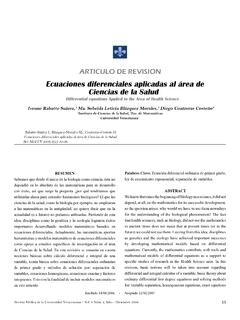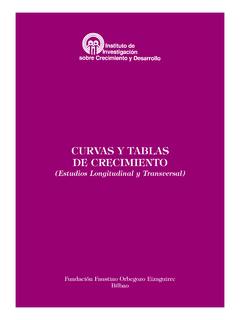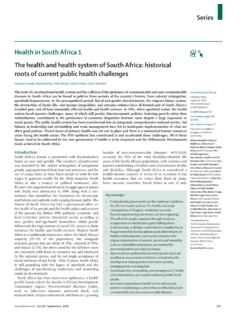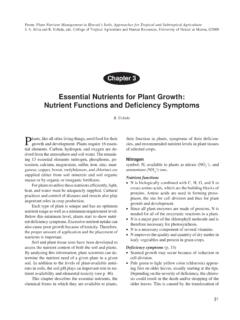Transcription of TAX AND ECONOMIC GROWTH - OECD
1 TAX AND ECONOMIC GROWTH * SUMMARY AND MAIN FINDINGS * A study jointly undertaken by the OECD Economics Department and the OECD Centre for Tax Policy and Administration (CTPA), prepared by: sa Johansson, Christopher Heady, Jens Arnold, Bert Brys and Laura Vartia. For a copy of the complete study, please see: 2 TAX AND ECONOMIC GROWTH 1. Summary and conclusion 1. Tax systems are primarily aimed at financing public expenditures. Tax systems are also used to promote other objectives, such as equity, and to address social and ECONOMIC concerns. They need to be set up to minimise taxpayers compliance costs and government s administrative cost, while also discouraging tax avoidance and evasion.
2 But taxes also affect the decisions of households to save, supply labour and invest in human capital, the decisions of firms to produce, create jobs, invest and innovate, as well as the choice of savings channels and assets by investors. What matters for these decisions is not only the level of taxes but also the way in which different tax instruments are designed and combined to generate revenues (what this paper will henceforth refer to as tax structures). The effects of tax levels and tax structures on agents ECONOMIC behaviour are likely to be reflected in overall living standards.
3 Recognising this, over the past decades many OECD countries have undertaken structural reforms in their tax systems. Most of the personal income tax reforms have tried to create a fiscal environment that encourages saving, investment, entrepreneurship and provides increased work incentives. Likewise, most corporate tax reforms have been driven by the desire to promote competition and avoid tax-induced distortions. Almost all of these tax reforms can be characterised as involving rate cuts and base broadening in order to improve efficiency, while at the same time maintain tax revenues.
4 2. This paper focuses on the effects of changes in tax structures on GDP per capita and its main determinants. Focusing on tax structures rather than levels is desirable because cross-country differences in overall tax levels largely reflect societal choices as to the appropriate level of public spending, an issue that is beyond the scope of tax policy analysis. Conversely, investigating how tax structures could best be designed to promote ECONOMIC GROWTH is a key issue for tax policy making. Yet, in practice, it is hard to completely separate the analysis of the overall tax burden from that of tax structure: countries that have a relatively high level of taxes may also have a tax structure that differs from that of other countries, and the response of the economy to a change in the tax structure varies across countries, depending on their tax level.
5 Even more importantly, fully disentangling the revenue-raising function of the tax system from its other objectives, equity, environmental or public health matters is difficult. In order to make the assessment of the effects of the tax structure on ECONOMIC performance manageable, these objectives are not dealt with in great detail in this study, except when there is a clear trade off between them and tax reforms aimed at raising GDP per capita. Nevertheless, the ways in which governments use the tax system to achieve these other objectives have been extensively studied by the OECD (for instance, see OECD, 2005c, on equity and OECD, 2006d, on the environment).
6 3. Most of the discussion on the link between changes in the tax structure and ECONOMIC performance focuses on the effects on GDP levels. This paper, however, recognises that in practice it may be difficult to distinguish between effects on levels and GROWTH rates. Indeed, any policy that raises the level of GDP will increase the GROWTH rate of GDP because effects on GDP 3 levels take time. Also, transitional GROWTH may be long-lasting, and so it has not proved possible to distinguish effects on long-run GROWTH from transitional GROWTH effects, although some elements of the tax system are likely to have a bearing for long-run GROWTH .
7 For instance, it is possible that taxes that influence innovation activities and entrepreneurship may have persistent long-run GROWTH effects, while taxes that influence investment also can have persistent effects on GROWTH but these will fade out in the long-run. In contrast, taxes affecting labour supply will mainly influence GDP levels. In this spirit, this study looks at consequences of taxes for both GDP per capita levels and their transitional GROWTH rates, with a large part of the empirical analysis devoted to assessing the effects of different forms of personal and corporate income taxation on total factor productivity GROWTH .
8 4. In open economies the design of a national tax system will need to consider the design of tax systems in other countries, since countries are increasingly using their tax systems to improve their ability to compete in global markets. Globalisation may also increase the opportunities for tax avoidance and evasion especially as concerns mobile capital income tax bases. Therefore, the mobility of the tax base plays some part in the design of tax reforms at the national level, and increased international tax policy cooperation among countries may allow for efficiency gains in some areas (for a discussion on this see Box 1).
9 5. However, there are important issues that this study addresses only cursorily. First, optimal taxation, or how to minimise the excess burden of taxation, is an important topic that is largely outside the scope of this project, although some references are made to the main insights provided by research in this area. Likewise, tax incidence, or who bears the burden of a tax, is not explicitly addressed in this work, except when it has implications for the way the tax structure affects the determinants of GROWTH . 6. Second, the transition costs of tax reform are not considered.
10 These include not only the costs to the public administration but also the costs to businesses in adapting to policy changes. In some circumstances, it might also include the costs of grandfathering some of the old tax provisions (or some other form of compensation) if taxpayers have made substantial investments based on the expectation that these provisions would be maintained. The existence of these costs implies that tax reform will only be attractive if it can be expected to produce offsetting gains in ECONOMIC performance. 7. Against this background, the analysis in the paper is organised as follows.


















